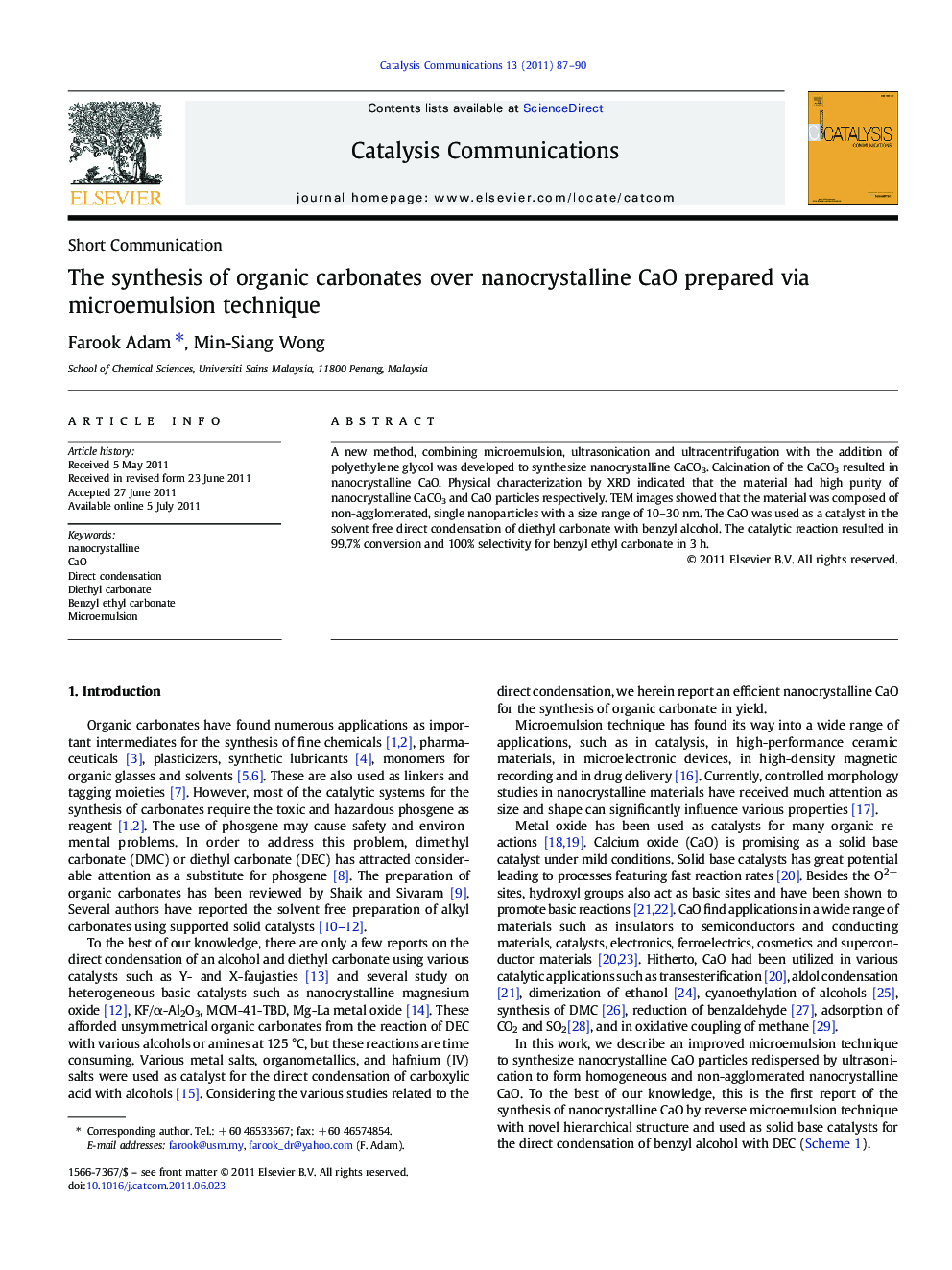| کد مقاله | کد نشریه | سال انتشار | مقاله انگلیسی | نسخه تمام متن |
|---|---|---|---|---|
| 50239 | 46785 | 2011 | 4 صفحه PDF | دانلود رایگان |

A new method, combining microemulsion, ultrasonication and ultracentrifugation with the addition of polyethylene glycol was developed to synthesize nanocrystalline CaCO3. Calcination of the CaCO3 resulted in nanocrystalline CaO. Physical characterization by XRD indicated that the material had high purity of nanocrystalline CaCO3 and CaO particles respectively. TEM images showed that the material was composed of non-agglomerated, single nanoparticles with a size range of 10–30 nm. The CaO was used as a catalyst in the solvent free direct condensation of diethyl carbonate with benzyl alcohol. The catalytic reaction resulted in 99.7% conversion and 100% selectivity for benzyl ethyl carbonate in 3 h.
A new method, combining microemulsion, ultrasonication, ultracentrifugation and addition of polyethylene glycol (PEG) was developed to synthesize nanocrystalline CaCO3. Calcination of the CaCO3 resulted in nanocrystalline CaO. The CaO was used as a catalyst in the direct solvent free condensation of diethyl carbonate with benzyl alcohol. The catalytic reaction resulted in 99.7% conversion and 100% selectivity for benzyl ethyl carbonate in 3 h.Figure optionsDownload as PowerPoint slideHighlights
► An efficient and selective synthesis of organic carbonate over nanocrystalline CaO.
► CaCO3 used to synthesize nanocrystalline CaO by microemulsion method.
► TEM images of CaO show non-agglomerated and single nanoparticle distribution.
► The effect of adding PEG suppressed the formation of aggregates.
► 99 % conversion and 100% selectivity for benzyl ethyl carbonate was achieved.
Journal: Catalysis Communications - Volume 13, Issue 1, 5 October 2011, Pages 87–90